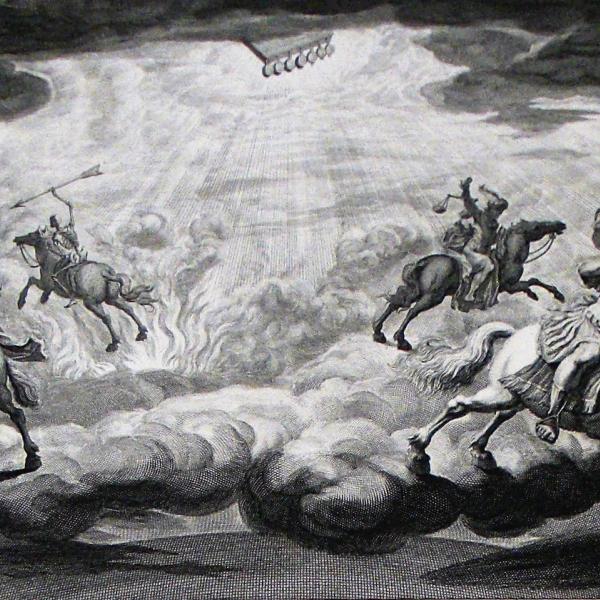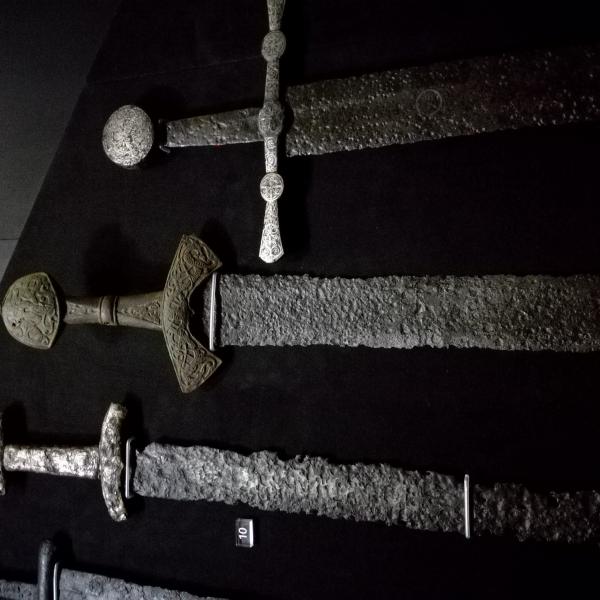Bronwen Konecky travels to tropical regions around the world gathering evidence of the geologic past. Using data from rain samples and sediments deep at the bottom of lakes, she is piecing together a story about Earth's climatic history – and what it can tell us about our planet's future.
Transcript:
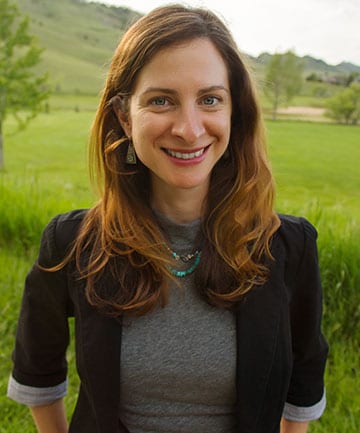
Christian Fogerty (host): Thank you for listening to Hold That Thought. I’m Christian Fogerty, a science writer and WashU alumnus. Today on the podcast, we’re talking with Bronwen Konecky of Washington University in St. Louis.
Bronwen Konecky (guest): My name is Bronwen Konecky, assistant professor in Earth and planetary sciences.
CF: Predicting whether it’s going to rain in a few hours is hard enough. Now imagine forecasting it over years or decades, across cities, countries, and continents. This might never be perfectly attainable, but understanding rainfall patterns from a local to global scale is essential for agricultural communities and the planet as a whole. For years, Konecky has conducted fieldwork in the tropics everywhere from Peru to Uganda and Southeast Asia, collecting and analyzing rainwater samples and sediment from lake bottoms to understand precipitation patterns.
BK: I'm drawn to places where we, we have really, really big questions because we have very, very little data. It's not that I don't care about North America – North America is great, I live here, but the questions about the water cycle are so fundamental and basic in the tropics. There's really, really big questions we just don't know the answer to, and it's both absurd and really exciting from a scientific perspective. I go after those places where when you look at a map and you see a big gap in data, those are the places that I'm drawn to.
"When you look at a map and you see a big gap in data, those are the places that I'm drawn to."
CF: Konecky hadn’t always planned to become a climate scientist. The importance of understanding rainfall in agricultural communities in East Africa first drew her attention when she began working in the region right out of college.
BK: I actually originally got into the career of climate science because I was working in East Africa and got really interested in rainfall while I was out there. I was working for a sustainable development program in 10 different countries in Subsaharan Africa trying to do poverty alleviation work. I kept hearing over and over again how people were struggling with rainfall variability – meaning when the rains were coming, when they were going to stop, how long they were going to last, that kind of thing. These are the really, really big questions for people who rely on rainfall to grow their crops. I thought that was really interesting and decided to change careers and go to grad school for it.
CF: Konecky’s research involves searching the geologic record for evidence of climate change. Things like ice, stalagmites growing in caves, and sediments from the bottoms of lakes can serve as natural historical records, reflecting long-term patterns of environmental change. Her approach, known as paleolimnology, is one way of understanding how precipitation and environmental conditions have evolved over time.
BK: What I do specifically is I work with the muck that’s at the bottom of lakes, plunging a corer into sediment and pulling it out. You can kind of picture a plastic straw full of mud, and that's essentially a mini version of what we get in the field. The mud of the bottom is old and the mud of the top is new. And we can date it using radiometric dating techniques or other techniques and figure out just how old or how new, and then reconstruct over time different elements that we find in the sediments.
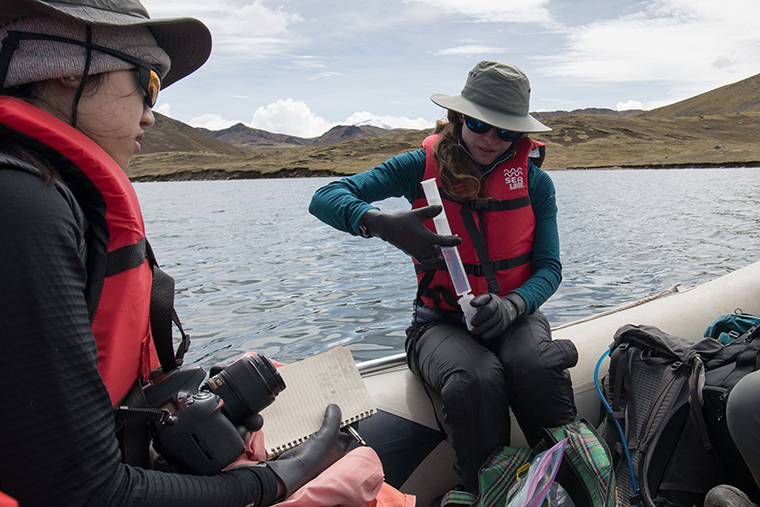
CF: Within the lake cores, Konecky is looking for biomarkers, which are molecular fossils preserved in the sediments that are associated with plants and animals that used to live in those environments. Like the rainwater she collects in East Africa, the biomarkers contain the elements oxygen and hydrogen. Analyzing the specific types of oxygen and hydrogen atoms –these are known as isotopes – within the samples helps Konecky reconstruct the environmental history of the area surrounding the lake.
BK: Imagine what happens between one storm one day and another storm the next day. Now imagine averaging that out over months to years, to decades, to centuries to ultimately millennia. That's the timescale that matters when it comes to real, big picture, long-term climate change. Because you can imagine that the greenhouse gases that are going into the atmosphere now are warming the planet now, but we're going to see impacts of these changes for centuries to come – even millennia, potentially.
"Imagine averaging that out over months to years, to decades, to centuries, to ultimately millennia. That's the timescale that matters when it comes to real, big picture, long-term climate change."
CF: Collecting these samples involves venturing into the field, far from the comforts and safety of home. Her expeditions have made for some harrowing stories. And especially with a limited amount of time to collect data, they can involve some pretty extreme highs and lows.
BK: Field work is both the best part of my job and the hardest part of my job. It's hard because there's always some new fresh nightmare to deal with that you weren't anticipating. In the past year I went up to the high Andes in Peru and collected some sediment cores from a lake that's at 16,000 feet. And that was challenging in many ways that I expected, as well as ways that I did not expect. It's hard to breathe. The need for oxygen that humans have is really real. And when you're suddenly away from sea level, you really feel it. And when you get up to, for me, it's when I'm over about 13,000 feet or so, then your head gets kind of dizzy, and it takes a couple of days to adjust to that. The first 36 hours I was completely useless. I was really sick and just couldn't do anything.
CF: Even though the pressure is lower at these high altitudes, the mental pressure can get high. These difficult situations make time in the field extremely valuable. Some days, the field team would wake up to sunny skies, only to spot ominous clouds a few hours later and turn back. This made those small pockets of time with favorable conditions that much more precious.
BK: The highest priority is everybody's safety. The second priority is the science. Priority number like 203 or whatever is your own ego or your own feelings about how things are going, or social dynamics and all that. It can be really hard to set that stuff aside, but really the most important thing you can learn as a scientist is to maximize the time that you have in the field, which is always limited.
"The highest priority is everybody's safety. The second priority is the science. Priority number like 203 or whatever is your own ego or your own feelings."
Luckily we were able to collect the cores we needed. We actually got everything we needed and ended up being okay. But there were a few days there where I was thinking about, you know – I had funding from National Geographic to go up there. I had funding from Wash U to go up there. There were some of my own startup funds that I was using. There was a lot riding on my ability to collect these cores. And there were a couple of days there where I was really pretty morose, thinking that perhaps it wasn't going to happen. But it did.
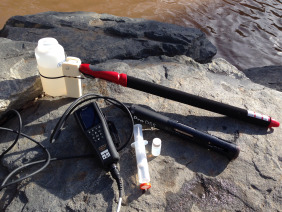
CF: The arduous process doesn’t end when Konecky returns to the lab. Often times these samples take a couple of years to analyze in order to get substantive results. Especially in climate science, this long-term perspective is essential. One of Konecky’s projects involves leading a collaboration of scientists to create a database of water isotope ratios. As the dataset grows with contributions from scientists all over the globe, a picture of the Earth’s rainfall patterns over the last 2,000 years emerges. But data gaps remain in tropical regions where agricultural production is important. Rainfall prediction is extremely vital for these communities. Climate change will hit these areas hard, making it essential to communicate the research across cultural barriers.
BK: And so when there's a situation like excessive snows in a dry season where it's not supposed to be snowing, to me it's an inconvenience for fieldwork, right? That's stressful. To them, it means that sometimes their herds of Alpaca die. They have incredible losses financially, and it's a huge risks to their livelihoods. Seeing them cope and adapt to those changes and how much resilience they have built into their social networks, the way that they kind of go about handling that kind of thing, is really inspirational. We really learn a lot. A lot of the traditions of people living up in the highlands are traditions that have been practiced for a long time. I'm working with anthropologists and archeologists in that environment for that reason, because they’re thinking about the longer term picture of how humans have managed to, not just thrive despite harsh conditions, but maybe because of harsh conditions. What is it about that harshness that makes people really innovative and resilient, and what have they been doing that might serve as some inspiration for us all?
"What is it about that [environmental] harshness that makes people really innovative and resilient, and what have they been doing that might serve as some inspiration for us all?"
CF: Konecky’s collaboration with anthropologists and the people in the communities she studies has contributed a body of knowledge just as important as the isotopic ratios themselves.
BK: One of the things we were asking people was, do you ever see a change in wind direction? So, trying to get at this question of when it starts raining, is that rain coming from a particular place? They're not going to sit down with the satellite map and point to where the rains are coming. But all of them started pointing in this one direction. They were like, oh yeah, when the wind starts coming from that way, that's when the rains are coming. And that was really cool. And that was consistent. We talked to a lot of people who said the same thing and that was – it wasn't surprising, in that it's something that I would have hypothesized to be true, but I never would have thought that it would have been so obvious from people on the ground. That was really, really exciting. So what we're doing with that project is trying to formalize the information that we can learn from people. Because we’re foreigners and we grew up in a different place, and we're never going to have the type of intuition about a place that somebody locally will. And so we can work with them to figure out what types of questions are the right questions to ask and how to best make the most impact from the information that they already have and what they already know.
CF: For Konecky, these collaborations are what make her job so exciting. But as adventurous as her job may be, bringing it all back to the bigger purpose at hand is her end goal. It started with an authentic desire to help subsistence farmers in Uganda before she started her doctoral work. And now she’s come full circle, returning to some of regions she’s served in, hoping to make a difference at both local and global scales.
BK: Ultimately I want my work to be useful. I’m not doing something that has direct applications to people right now, and it might not even have direct applications next year or in five years. It will eventually, but it's this long, slow process of just the evolution of knowledge. That's what we do when we do basic research. It can be hard. So that's how collaborations com einto play. I have to be constantly talking to people to understand what they want, and what is useful, and how I can use some of the tools that I use my lab in ways that could actually be really helpful.
CF: Thank you for listening to Hold That Thought. To explore more ideas, visit holdthatthought.wustl.edu.

